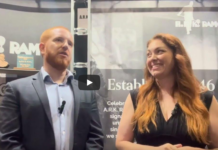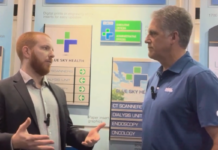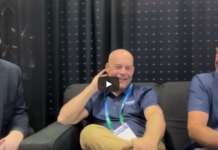 Understanding the trends in plastics related to signage is critical when selecting the right product to enhance your brand.
Understanding the trends in plastics related to signage is critical when selecting the right product to enhance your brand.
Acrylic, impact-modified acrylic (IMA), and polycarbonate may look identical to an untrained eye but knowing the differences will ensure the right material is chosen.
Although these materials do share properties, key differences exist and should be reviewed. Considerations for sign applications are strength, ease of fabrication, aesthetics, and durability. Each sign application has unique requirements.
Acrylic, IMA, and polycarbonate are UV enhanced and easy to clean. A sheet’s chemical resistance varies based on type, concentration, and duration of exposure.
The location and use of a sign often dictates what chemicals it will be exposed to and which material provides better resistance. Acrylic and IMA have a better chemical resistance to certain substances, and polycarbonate may be resistant to other chemicals. The sheet’s chemical resistance is a factor during routine cleaning.
Care must be used when choosing a cleaner for the job, as solvent cleaners can attack plastics. A soft cloth and mild cleaner should be used for the substrates with mild dish soap and water being the best option.
Thermoforming sheet material is common in the sign industry. Acrylic, IMA, and polycarbonate are easy to vacuum form using standard forming equipment.
Prior to forming, polycarbonate must be dried, while drying is not necessary for acrylic or IMA. Polycarbonate has a shorter forming cycle because its higher softening temperature allows the part to “set up” faster—the formed part can be removed from the tool quicker.
Depending on the formed part design, automated vacuum forming equipment can achieve up to three times the throughput. In addition, IMA has excellent forming capability for difficult molds.
While forming should be the main factor influencing material selection, cost should also be considered. Besides the initial cost of the material, additional fees may be incurred through shipping and potential damage of a finished sign while in transit.
The sign material choice may influence the packaging design to reduce or prevent shipping damage or breakage. These savings can go right to the bottom line, especially if such damage leads to installation delays or multiple visits.
Painting and screen printing have historically been the primary decoration methods. Today screen printing, while still common for large signs, is not typically used for custom or low-volume production due to high screen setup costs. But the advantages remain: the solvent inks are durable, there are little substrate limitations, and the colors are considered more robust.
Historically digital printing was limited to flexible substrates for the graphic arts industry. But as wide format printing expanded, so did the application of flatbed printers for rigid substrates (such as PVC, PETG, acrylic, IMA, and polycarbonate).
Digital printing is trending toward latex inks and the commonly used UV-cured inks due to their lower environmental impact. Latex inks are water-based and cure quickly with low heat to coalesce the latex and drive off water. Latex inks are primarily used with flexible substrates but also work well with rigid plastics.
UV-cured inks have low solvent content and are cured by exposure to intense UV light rather than driving off solvent. These lamps consume a lot of energy and can increase the printing cost. Energy costs have led to more energy-efficient UV sources such as UV-emitting LEDs.
UV-LED printers are in high demand due to lower operating costs for smaller format printers. LEDs are cooler than traditional mercury arc lamps and emit a narrower spectrum of UV. But, due to both, LEDs are believed to yield less robust prints than the warmer and wider UV spectrum of a mercury vapor lamp.
While owners of UV-LED printers have seen savings in print costs, many have had issues with ink adhesion on rigid plastic substrates. This is not impeding the growth of these printers and ink formulations and curing technologies are continuously improving.
Thermoformable UV-cured inks have recently emerged, an important technological advancement in sign decoration. Inks can be digitally printed before forming and eliminate setup costs, spray mask removal, air brushing, or vinyl lettering. Thermoformable inks must be flexible enough to support deep draws on sign faces made with rigid plastic substrates.
The application of vinyl to the first surface of a sign face is another common decoration practice. Colored vinyl can be applied as a background color or light diffusing white with the message or letters cut out of the vinyl applied to plastic. Pre-printed vinyl can be applied to flat or formed signs. Digital printing on vinyl film allows for wide design versatility.
With improvements in translucency and weatherability, flex face signage is now a material consideration for smaller pylon and box signs, historically a rigid substrate application.










